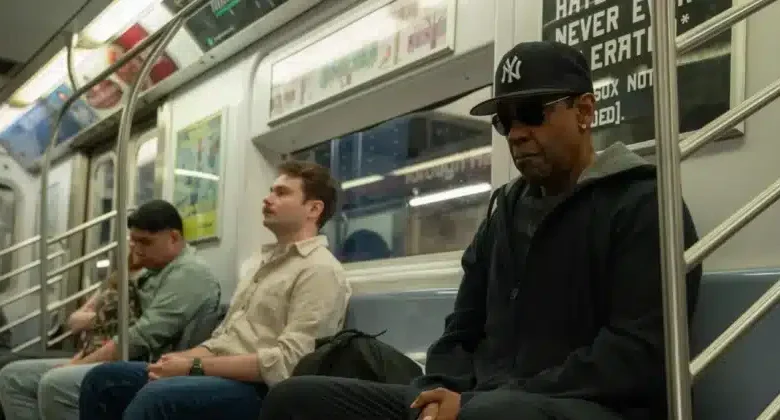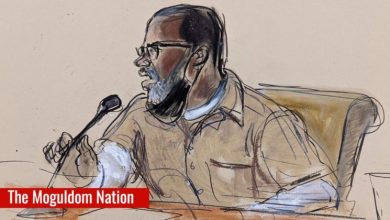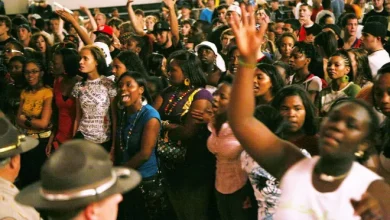Spike Lee and Denzel Washington Team Up for Highest 2 Lowest: 6 Critic Reviews

Major publications offer mixed verdicts on the director’s Kurosawa-inspired crime thriller starring Denzel Washington
Nearly two decades after their last collaboration, Spike Lee and Denzel Washington have reunited for “Highest 2 Lowest,” a contemporary reimagining of Akira Kurosawa’s 1963 masterpiece “High and Low.” The film marks the fifth partnership between the iconic filmmaker and the two-time Oscar winner, following their previous collaborations on “Mo’ Better Blues” (1990), “Malcolm X” (1992), “He Got Game” (1998), and “Inside Man” (2006).
Set in the high-stakes world of the music industry, “Highest 2 Lowest” stars Washington as David King, a successful but aging record executive fighting to regain control of Stackin’ Hits, the hip-hop label he co-founded. When kidnappers mistakenly abduct the son of his closest friend and chauffeur Paul (Jeffrey Wright) instead of his own teenage boy, King faces an agonizing moral dilemma: risk his entire fortune and business empire to pay the $17.5 million ransom for someone else’s child.
The film transplants Kurosawa’s examination of class and morality from 1960s Tokyo to contemporary New York, with Lee using the kidnapping plot as a framework to explore themes of cultural authenticity, generational divides in Black America, and the tension between artistic integrity and commercial success. A$AP Rocky plays the kidnapper, an aspiring rapper whose desperation to break into the industry drives him to extreme measures.
Premiering out of competition at the Cannes Film Festival in May 2025, the film represents a significant creative risk for Lee, who has struggled with previous remakes including his widely criticized 2013 adaptation of “Oldboy.” At 68, the Brooklyn filmmaker appears to be using this Kurosawa homage as both a meditation on his own artistic legacy and a platform to critique contemporary culture, particularly what he sees as the degradation of authentic Black musical expression.
The Washington-Lee reunion carries particular weight given both men’s evolution since “Inside Man.” Washington, now 70, has settled into an elder statesman phase of his career, taking on more action roles and complex antiheroes while maintaining his status as one of cinema’s most commanding presences. Lee, meanwhile, has experienced a career resurgence with recent successes like “BlacKkKlansman” (2018) and “Da 5 Bloods” (2020), making this collaboration a high-profile test of whether their creative chemistry remains intact.
With its themes of cultural preservation, economic power, and intergenerational conflict, “Highest 2 Lowest” arrives at a moment when questions about artistic authenticity and commercial viability dominate conversations across entertainment industries. Lee’s decision to remake a Japanese classic while centering Black American experiences also raises questions about cross-cultural adaptation and the director’s evolving worldview.
Critics have responded with notably divided opinions, suggesting the film may represent either a creative peak or a troubling ideological shift for one of American cinema’s most vital voices.
RogerEbert.com – Robert Daniels: “Exceptional Personal Filmmaking”
Robert Daniels praised the film as “an exceptional piece of personal filmmaking that might be Lee’s most energetic film since ‘Inside Man.’” Writing for RogerEbert.com, Daniels highlighted the movie’s deliberate pacing strategy, noting how it “begins on a slow and sleepy climb” before “exploding into a manic filmmaking cornucopia.”
Daniels emphasized the strength of the Washington-Lee reunion after nearly 20 years, describing how the film becomes “a full blown Spike Lee adventure” once it leaves the confines of the protagonist’s penthouse for the chaotic streets below. He particularly celebrated a subway sequence featuring salsa legend Eddie Palmieri, calling it “maybe the best, most controlled sequence of Lee’s career.”
The critic viewed the film as Lee using the past as “a starting point to launch into what may be the final phase of his career,” concluding that “He is making a Spike Lee joint. And it’s exceptional.”
The New Yorker – Richard Brody: “A Conservative Pivot”
Richard Brody offered the most critical assessment, arguing that “Highest 2 Lowest” marks “a conservative pivot” for Lee. Writing in The New Yorker, Brody suggested the film represents a troubling ideological shift, comparing Lee to conservative filmmakers like Whit Stillman and Clint Eastwood.
Brody criticized the film’s underlying economics, describing it as promoting “cultural capitalism of producers with a critic’s discernment, an artist’s passion, and a financier’s savvy.” He noted how the movie presents a vision where Black music based in jazz and gospel triumphs over hip-hop, calling it “fundamentally conservative.”
Despite his ideological concerns, Brody acknowledged Washington’s “thrilling range from purrs to roars” and praised the film’s visual style. However, he concluded that Lee appears to be “crossing the East River Rubicon” philosophically, representing an unexpected artistic transformation.
The Guardian – Andrew Lawrence: “Rages Against the New”
Andrew Lawrence delivered a scathing review in The Guardian, arguing that Lee’s “reinterpretation” of Kurosawa’s classic “can’t find much new to say.” Lawrence criticized the film for being a vehicle for Lee to “launch fresh attacks against a stubborn personal bugbear: the changing times.”
The Guardian critic took particular issue with Lee’s treatment of modern hip-hop, noting how the film “amplifies the music’s association with what behavior conservatives might charitably characterize as unrefined.” Lawrence contrasted this with Lee’s 1989 masterpiece “Do the Right Thing,” which “lionized hip-hop as a voice of protest.”
Lawrence concluded that Lee risks becoming “a relic himself” if he continues “whingeing nostalgic like this, Grandpa Simpson-style,” suggesting the director’s cultural relevance is diminishing.
BFI/Sight and Sound – Christina Newland: “Uneven but Magical”
Christina Newland offered a more balanced perspective for Sight and Sound, acknowledging the film’s tonal inconsistencies while celebrating its strengths. She noted that the movie “doesn’t always fire on all cylinders” but praised the “remarkable chemistry” between Washington and A$AP Rocky.
Newland highlighted Lee’s visual flair, describing his use of “decorative transitions, splitscreens, 16mm, and handheld” techniques. She particularly praised the confrontation between Washington’s music mogul and Rocky’s kidnapper, calling it the film’s “greatest success” and noting how it explores “the generational, musical, and monetary divide between Black people in America.”
Despite its flaws, Newland concluded that Lee “brings an exuberant, vivid, scalpel-smart vision to it all,” resulting in work that is “uneven, but magical all the same.”
Variety – Peter Debruge: “More Than Justifies” the Remake
Peter Debruge provided the most enthusiastic review, writing in Variety that the film’s “sensational third act more than justifies what might have seemed an unnecessary update.” He praised Lee for taking “High and Low to new highs, delivering a soul-searching genre movie that entertains while also sounding the alarm.”
Debruge highlighted the Puerto Rican Day Parade sequence as “a spectacular sequence that instantly ranks among the best New York City action set-pieces of all time.” He also praised the climactic confrontation between Washington and A$AP Rocky, describing it as a moment where “the movie rockets into a sublime new stratosphere.”
The Variety critic concluded that Lee “clearly has something vital to add” to Kurosawa’s original, transforming the remake into both entertainment and cultural commentary.
Rolling Stone – David Fear: “An Excuse to Watch Denzel Go HAM”
David Fear took a middle-ground approach in Rolling Stone, describing the film as falling “ironically smack dab in the middle” of Lee’s filmography quality-wise. Fear praised Washington’s late-career evolution, noting how the actor has moved into “an intriguing phase of his career that laces his usual rigor with a late-act looseness.”
Fear highlighted two standout sequences: the ransom drop involving Eddie Palmieri’s performance and the rap battle between Washington and A$AP Rocky. He noted that “Denzel has bars” and described their face-off as belonging “in any future highlight reel of everyone involved.”
While acknowledging the film’s flaws, Fear concluded that it succeeds as “an excuse to watch Washington go HAM” while exploring Lee’s own relationship with a changing entertainment industry.
The mixed critical reception suggests “Highest 2 Lowest” will likely divide audiences much as it has critics, with some viewing it as a return to form and others seeing it as evidence of an artist struggling to remain relevant in a changing cultural landscape.




